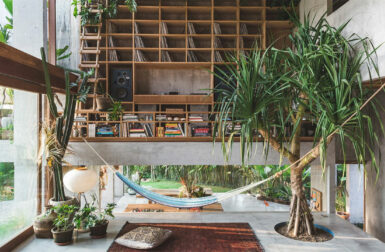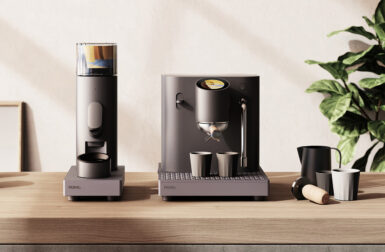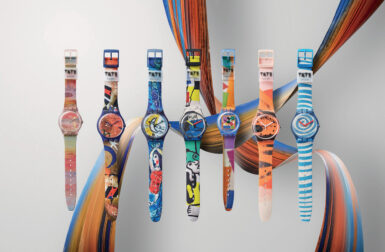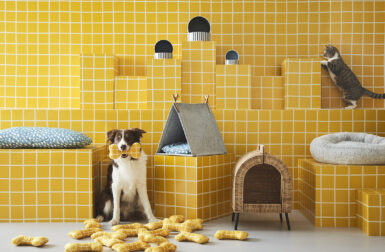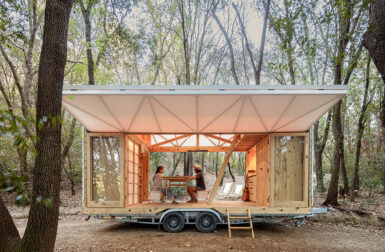This is the first in a series of five posts we’ll be doing on “Technology and Design” with the support of Intel that focus on how technology has shaped and will shape design. Not only will we get to take a closer look at the products we all use daily, but we’ll be talking to designers from all over the globe about how they use technology in their design work every day.
Technology is changing so quickly that most of us can barely keep up with the latest and greatest. Not only are devices getting faster, but they’re getting smaller and more useful. Designers use all kinds of technologies in their every day lives, from portable devices to software to techniques — we’ll cover it all.
My Smart Design Life is a two-part article in which we chat with three designers — Chris Spooner (graphics) , Kelly Hoppen (interiors), and Yves Behar (products) — to get the details of their “Smart Design Life”; in other words, how they’re wired. We wanted to find out exactly how these designers use technology every day and how it has changed the way they work and live (the good and the bad). In Part Two, the designers will imagine what technology and life will be like in 10, 20, even 30 years from now.
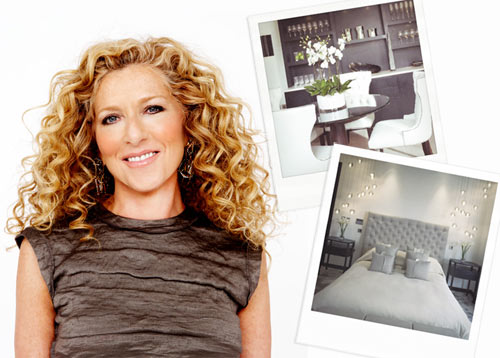
Kelly Hoppen MBE is a world-renowned British interior designer who has pioneered a simple yet opulent style. She started her business at the age of just sixteen, born out of a love of interiors and has offered her talents to wallpaper, paint, furniture, print on demand artwork, home fragrance and even a collection of ethical organic clothing.
Technology is moving so quickly that it’s hard to keep up, especially on the go. How do you stay connected every day?
Chris: I use my MacBook and iPhone to stay connected. Usually I’ll be in my home office connected to the web, but whenever I’m out and about, my iPhone certainly comes in handy to access the web.
Kelly: I use my Blackberry and iPad to stay connected to the office and my clients around the world. I think it’s extraordinary how connected we all are now though technology does tend to dictate when you can actually switch off. On a recent holiday I brought my Blackberry, so it wasn’t until I actually turned it off near the end of the trip that I was actually able to switch myself off. I also like using Twitter to stay connected and share with people, though I do think people need to be more honest about why they are using it; I promote my projects sometimes and am really clear about that.
Yves: I have a virtual connection to the world through reading news online such as Daily Beast, and through using twitter as a news-feed. The access point is my phone, iPad or laptop. That said, sometimes just walking to a meeting, looking at people in the street, observing the idiosyncrasies of everyday life, conveys more knowledge that a screen, and definitely informs me about the ideas, needs and aspirations I need to be aware of in order to design.
What are you using computer technology to do every day?
Chris: My computer is used for most of my hobbies, for socializing, networking and sharing content. Without it I’d definitely be very lonely, and probably much poorer in that the majority of my work is conducted over the Internet.
Kelly: I use my computer mostly for emails but also for getting online to do research. It is really empowering to be able to find or verify things instantly.
Yves: Most importantly for my creative work. While a lot of my design work is done with paper and pencil, which is really the fastest way to communicate, I review a lot of work-in progress on my computer.

Chris Spooner is a creative designer and blogger who runs his own design business as well as a popular graphic design blog called SpoonGraphics and a web design blog called Line25.
How has newer technology affected your life?
Chris: It has definitely given me more opportunities. Not so long ago it would have been extremely difficult to do business overseas. These days I can take on design projects from anywhere in the world.
Kelly: Well I did mention that it’s harder to switch off. The thing that I love most about technology though is the ability to connect with people around the world. This year alone people from China, Malaysia and even Kazakhstan have been in touch inviting me to come and do speaking engagements. Without the web and digital technology I wouldn’t have had people from places like these get in touch.
Yves: Definitely the smartphones and tablets have changed the way I consume media…and it makes me feel good that I do not need physical paper and magazines in order to stay in the loop. My recycling bin is getting smaller…
When designing, what are the most important functions you look for in your computer?
Chris: The speed and reliability are the two most important factors. It needs to be able to handle the workload with no risk of losing everything I’ve been working on.
Kelly: Storage. I use my computer primarily for research but also for storing images. I have hundreds and hundreds of images on my computer! Before I would have had stacks of books to refer too but thanks to my computer everything is all digital and very streamlined. I still love books of course, but being able to store so much in one place is really empowering.
I still do most of my designing by hand, but in the office we use design programs like CAD and Vector to render drawings and plans for our projects.
Yves: As I said, the idea generation of the design process is done with pen on paper. Lots of it. But when on the computer, the ability to change a document, adjust form and color, simplify or add elements, are things I appreciate in any program.
What’s the one tech item or feature that has had the biggest impact on how you work and why?
Chris: It’s a basic item but the Apple keyboard I use as part of my computing setup has made one of the biggest impacts. It’s so easy to type at a much faster rate with the smaller keys in comparison to a typical oversized keyboard.
Kelly: I love my iPad but even laptops have replaced traditional portfolios. I don’t need to carry around heavy books or portfolios when speaking to clients. Now, I just show them everything digitally and and quickly reference other things online if I don’t already have images stored on my system. Work is so much more portable now, and I can bring it out and show people my projects or inspirations where ever I am. Equally, I can stay in touch with everyone even if I’m not in the office. On holiday, I could still stay in touch and email people all over the world about projects. I also took and shared loads of photos while I was away as well which previously would have been a really cumbersome process but thanks to technology now it couldn’t have been simpler.
Yves: Probably cut and paste…sometimes I cut parts of an object, and paste is differently on another, stretch and distort it, till it better represents what I want. I use the computer as a roughing and fast ideation tool.
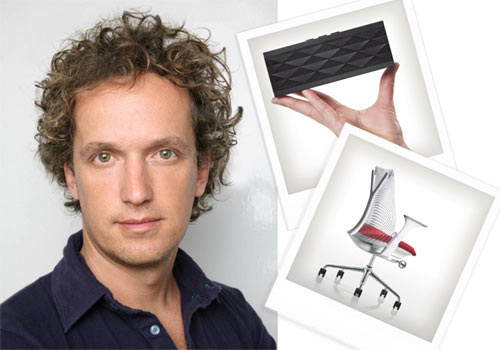
Yves Behar is founder of fuseproject, a San Francisco-based design firm focused on forward-thinking sustainable design focused on making our lives better — he calls it “Design for Good.” Yves notes that the responsibility of the designer is to help promote change for the better and has infused that into fuseproject’s culture. His designs have won over one hundred awards.
What has been the biggest frustration for you with new technology?
Chris: The biggest frustration always has to be obscure bugs. Thankfully most are squashed with a simple reboot.
Kelly: Learning how to use it! I love new technology but I do need someone to show me how to use it first. Once I get the hang of it I’m fine but I do need to be shown because technology certainly isn’t second nature to me. Luckily, the team in the office are all young and a bit geeky when it comes to technology so they always show me the latest things.
Yves: Mostly technology is still not intuitive, with functionalities which one has to chase around the laptop, phone or pad, with extraneous functionalities and confusing sequences of events.
In your lifetime, what do you think has been the biggest change in technology?
Chris: The biggest change so far has to be the availability of the Internet. In my 26 years so far we’ve gone from no real public Internet to slow dial-up to super fast high speed broadband.
Kelly: Portability. Devices have become so much smaller which makes it so much easier to work and stay connected. Take the Blackberry for example, it allows me to stay connected regardless of where I am. Before when I used to be out at meetings or traveling for business I’d come back to hundreds of emails when I got back to the office which was so overwhelming. Now I use my Blackberry to stay connected and am able to “clear the decks” at night before I go home so I can really switch off and not have to worry about what’s waiting for me when I get back in. I do get emails from China overnight though, but that’s the joy of an international business.
Yves: In my lifetime everything has changed thanks to technology: the way we send written mail, the way we leave notes, the way we use voice, the way we remember and connect to others. That said, some fundamentals about all of the above have not changed: to brainstorm ideas or designs with someone is best accomplished in person. The only excuse for any kind of travel these days is “I need to sit down with X, and kick-around ideas”.
Do you think technology has made the world a better place?
Chris: Definitely. Technology has enabled greater and faster advancements in the medical industries (among others), which help improve and save people’s lives.
Kelly: Yes! The fusion of design and technology is fantastic. I remember when people used to hide their television sets in their homes! I actually worked with HP to try and educate people on how fantastic design can be when it comes to technology. I think people now look at how they can incorporate technology into there homes. The designs have become more simplified and also more cost effective so people aren’t frightened of it anymore. I don’t think we’ve quite cracked sound systems but hopefully a better system is on the way.
Yves: Yes technology certainly has made the world a better place, because we know more about the world and the people around us, and have less excuse for bad decisions.
Share your own Smart Design Life on Twitter – use hashtag #IntelEMP to follow the discussion.
 This article is part of the Technology and Design series, brought to you by Intel®, creating a better future with next-generation technology. Read all of the Technology and Design articles here.
This article is part of the Technology and Design series, brought to you by Intel®, creating a better future with next-generation technology. Read all of the Technology and Design articles here.

